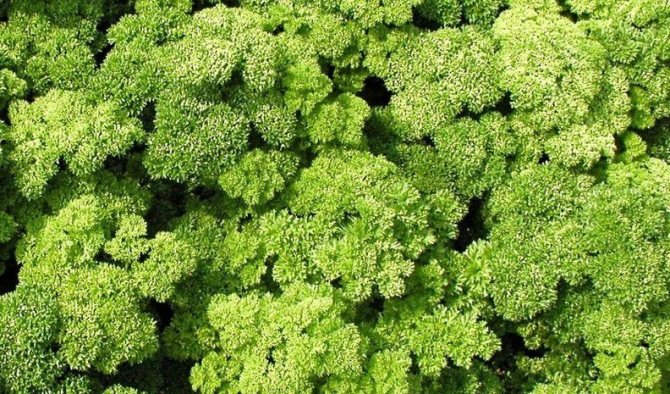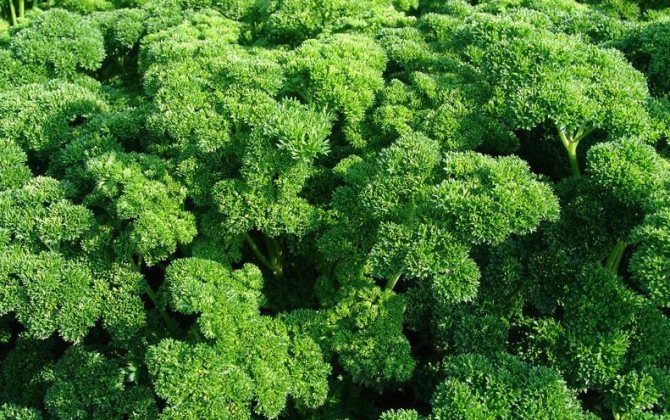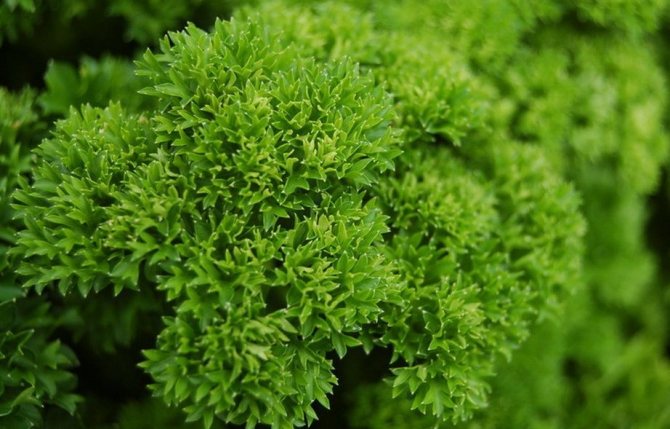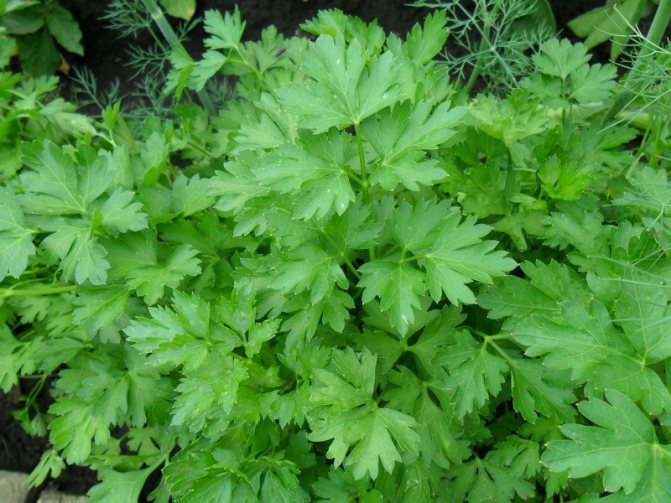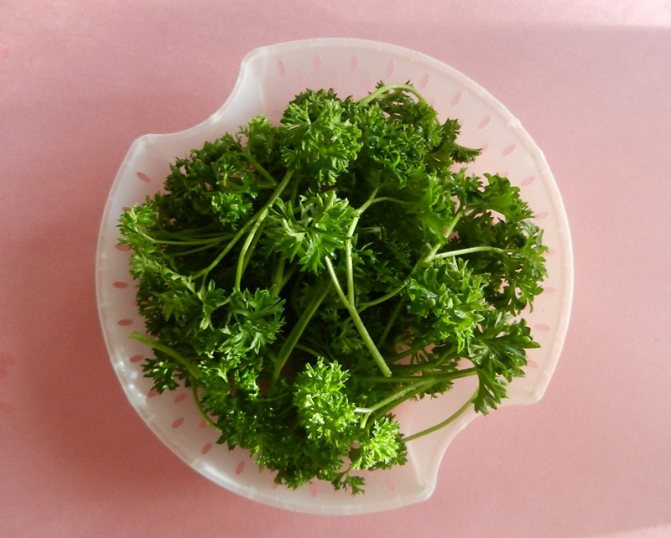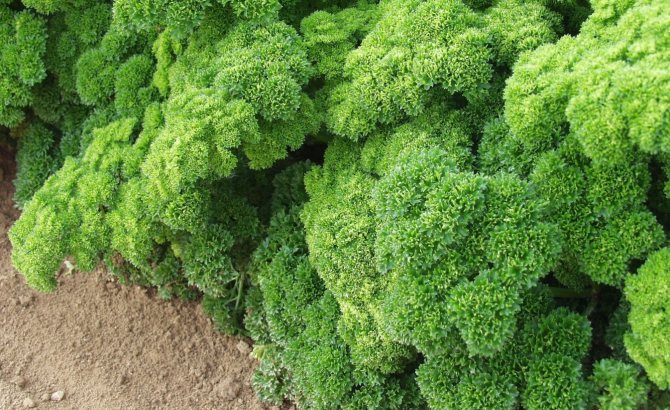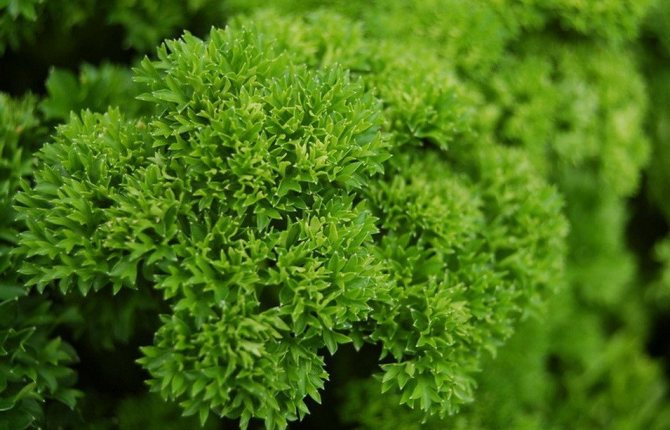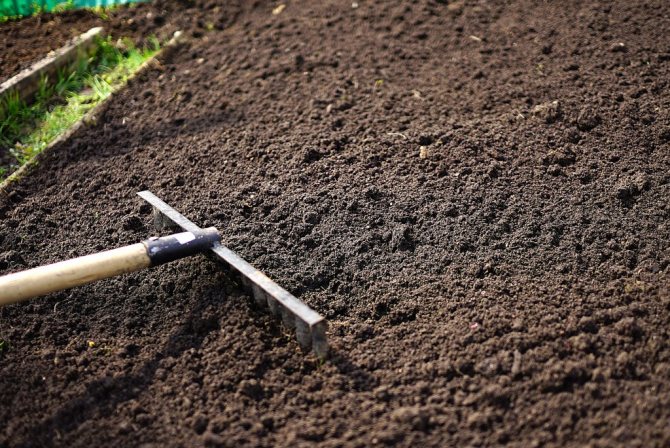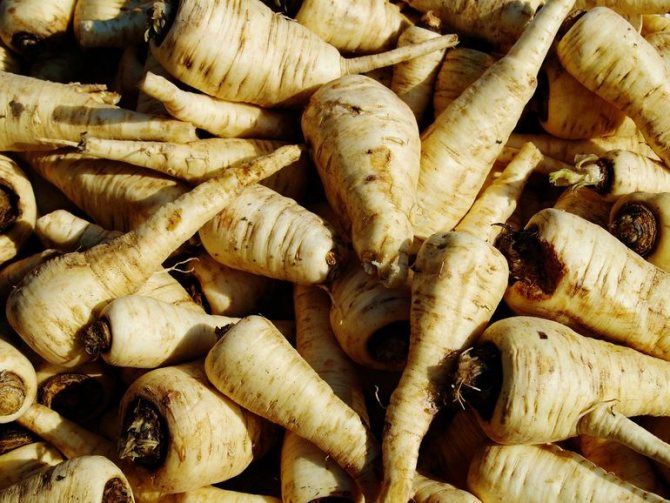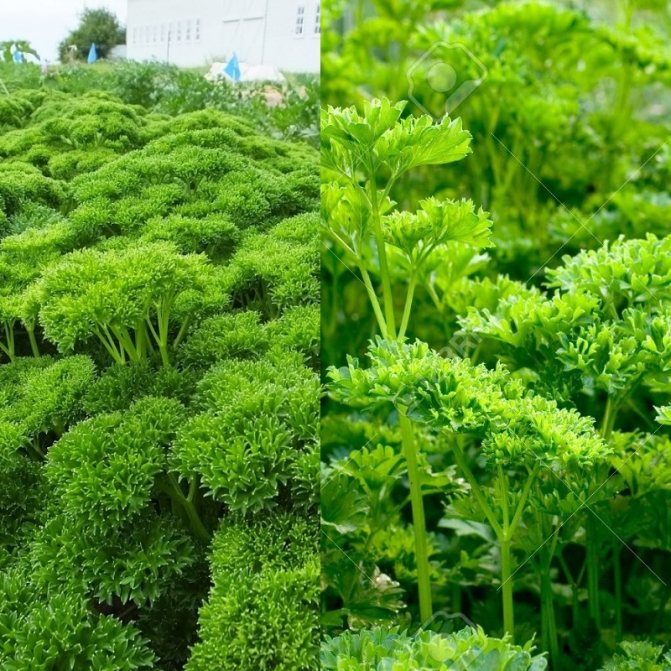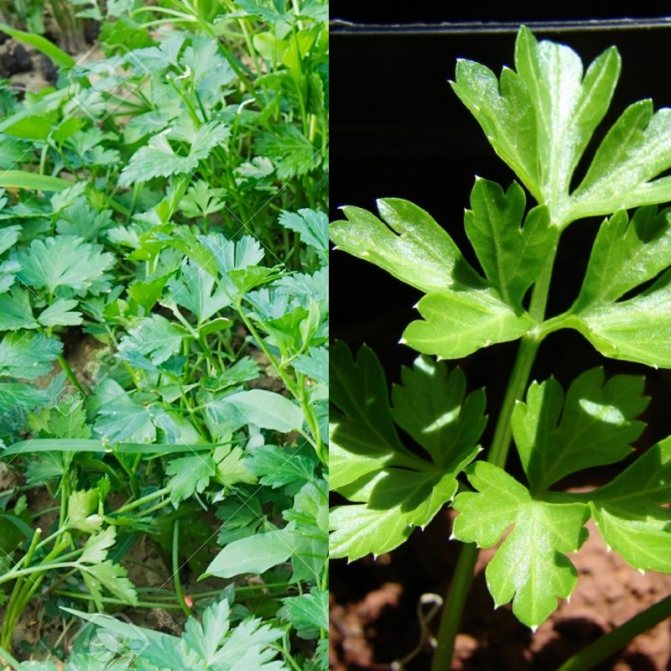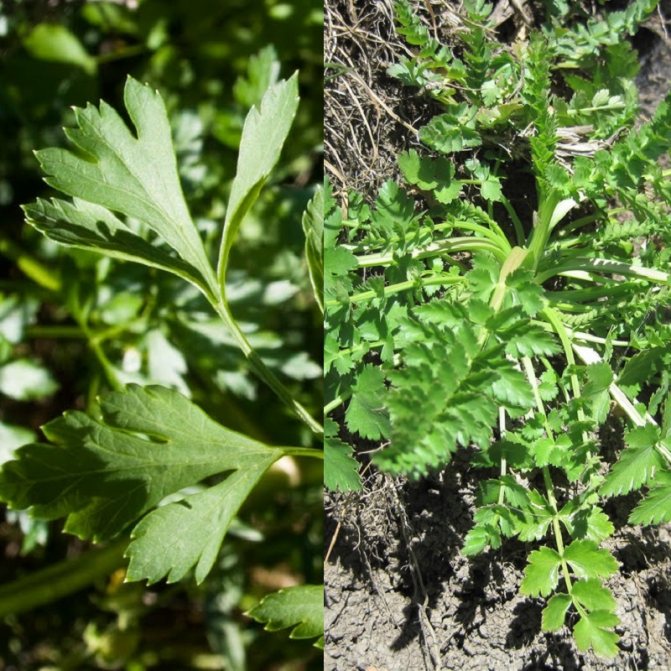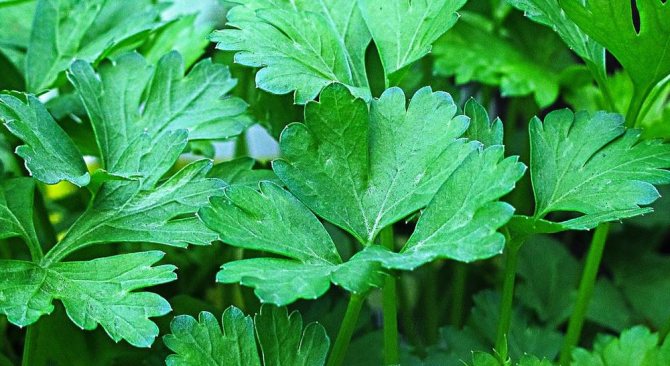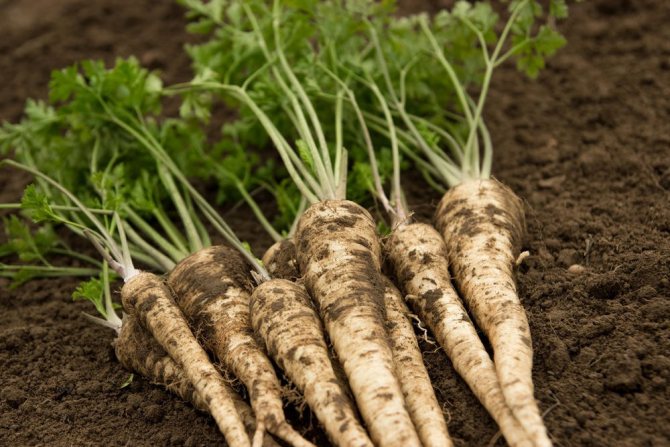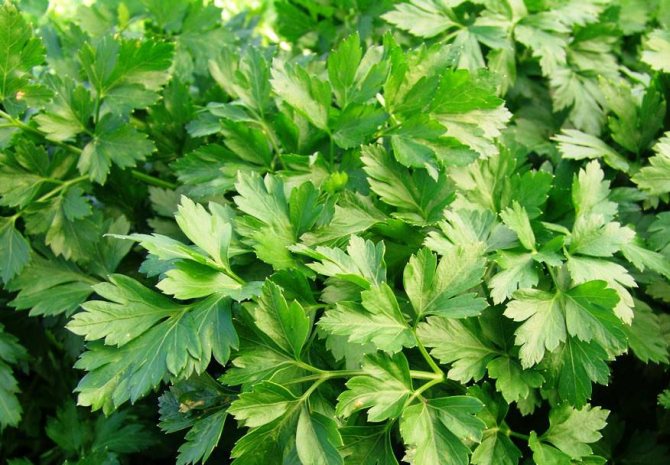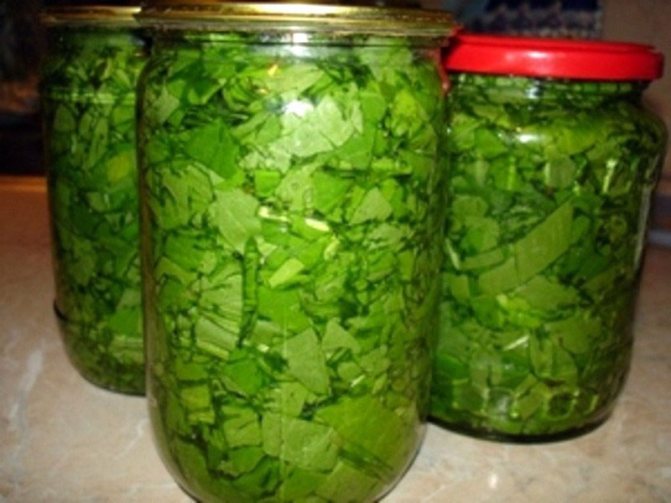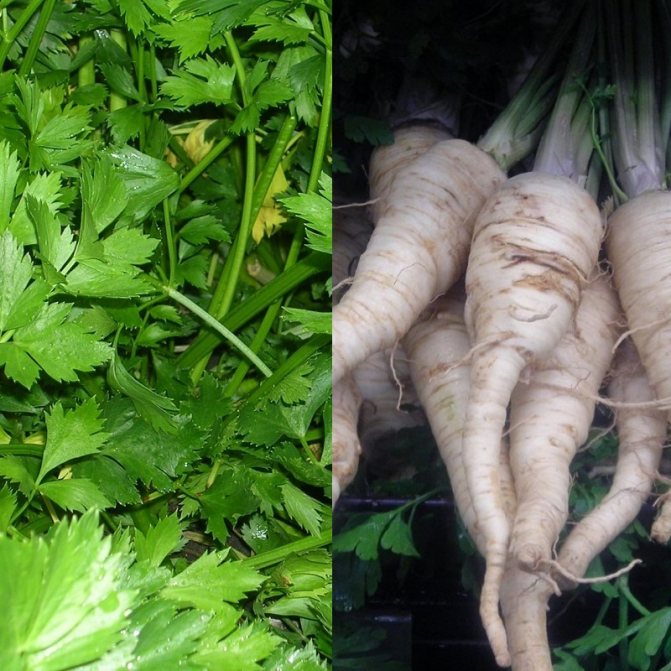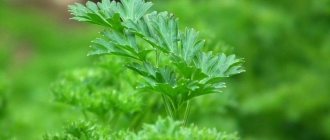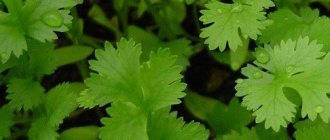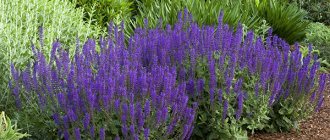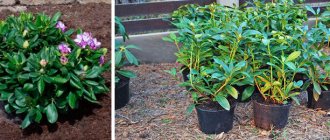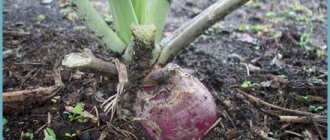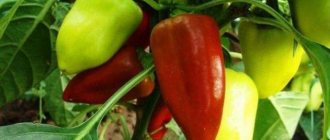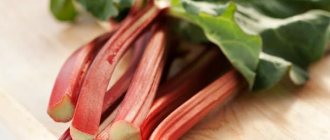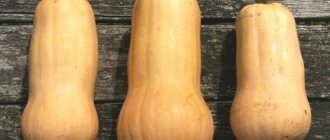It is a biennial herb of the Umbrella family. Other names are pestle, petroselin grass, svergibuz. Parsley is known and used since ancient times as a remedy; it was considered a gift from the Gods for its medicinal properties and unique aroma. Currently, parsley is used in folk medicine, in cooking, and is included in many spices. The plant is rich in useful substances, in terms of the content of vitamins and ascorbic acid, it surpasses many fruits and vegetables, and in terms of carotene content it is not inferior to carrots. These healing properties of parsley were appreciated and amateur gardeners began to grow it in large quantities in their gardens and backyard plots.
Content
- Description
- Planting parsley When to plant
- How to plant
- Care
- Planting parsley in the ground
- Diseases
- Beneficial features
Experienced advice
Despite the fact that the seeds of the spicy grass are recognized by the Rospotrebnadzor as a drug-containing substance, today the cultivation of the crop is not illegal. Therefore, any summer resident can sow curly sprouts in the gardens.
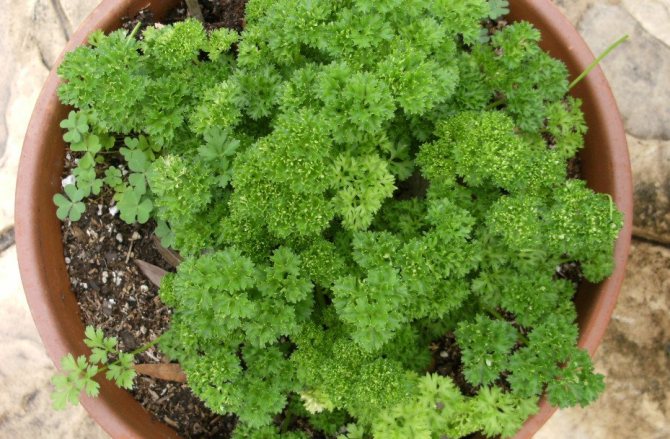
Parsley is a very healthy, highly vitaminized herb, which is not only possible, but also needs to be consumed regularly. It brings undeniable benefits to the human body and at the same time is easy to cultivate and care for.
If desired, everyone can grow greens on their windowsill. In this case, you can use not only the green mass, but also the root, stems, and also the seeds of the plant. However, experts advise, if necessary, to prepare a decoction or infusion based on seeds, use the seed material of ordinary parsley, and not curly.
Important! Only a gardener who is engaged in mass cultivation of spices in order to obtain a large volume of seeds can be criminally liable for the cultivation of these greens.
So, curly parsley is an affordable and medicinal herb that can become an irreplaceable assistant in the culinary, cosmetic field and in the field of traditional medicine. The unique chemical composition of the plant, simple care of crops and ease of cultivation make this spice a welcome guest in the garden of every domestic summer resident.
Planting and caring for parsley
- Landing: sowing seeds in open ground - before winter (from the second half of October) or in the spring (from the second half of April), and then - every two weeks until the end of July by a conveyor method.
- Lighting: bright sunlight.
- The soil: light, loose, fertile, not very wet sandy loam or loamy, with a pH of 6.5-7.0.
- Watering: early in the morning or after sunset. Root parsley is watered 2 times during the growing season, leaf parsley - much more often.
- Top dressing: nitrogen fertilizers for leaf parsley are applied 2 times per season, root varieties at the beginning of growth are fed with full mineral fertilizer, and in August - only with potassium-phosphorus fertilizer.
- Reproduction: seed.
- Pests: melon aphids, carrot flies, carrot flies, stem nematodes, slugs.
- Diseases: rust, cercospora (early burn), septoria (white spot), alternaria (black rot), stolbur and powdery mildew.
Read more about growing parsley below.
Fruit picking
The foliage of curly parsley is harvested depending on its growth. The fruits are harvested in the autumn, assessing in advance how ripe the parsley is. The leafy part must be cut off, and then chopped and frozen, you can also make butter.
When dry, the foliage loses its pleasant aroma. The root system of the plant must be prepared in the first year, during this period it has the shape of a spindle. Next year, the root of curly parsley is used for medicinal purposes.
The roots need to be dug out, pieces of soil removed, dried and moved to the basement for preservation. If you do not do this, the roots will quickly wither and rot.
To obtain seed, the umbrellas are removed, dried in a dark place and then the threshing method is applied.
Parsley plant - description
Parsley is represented by annual and biennial grasses with an erect stem. Parsley leaves are double or triple pinnate. The flowers have heart-shaped whitish or greenish-yellow petals, sometimes with a reddish tint at the base. Parsley fruit is ovoid, squeezed from the sides. The plant is moisture-loving and cold-resistant, parsley seeds germinate at temperatures from 1 to 5 ºC, and the seedlings normally tolerate frosts down to -9 ºC, so in areas with warm mild winters there is no need to dig the parsley root out of the ground in autumn.
Root parsley
In the first year, the plant forms only a root vegetable, similar to carrots, but whitish or yellowish in color, and a rosette of leaves. Root parsley gives seeds in the second year. Root crops of the plant help to heal wounds, preserve vision, strengthen the gums, and stimulate renal activity. They contain iron, potassium and phosphorus salts. Parsley roots are used as a spice for making pickles and pickles for canning, for making soups.
Leaf parsley
Leaf parsley does not form a root fruit, although its root system is developed and branched. Parsley is used in food as an integral part of salads, a spicy addition to side dishes and first courses, to fish. They use it not only fresh, but also in dried and frozen form, since with proper storage, the beneficial substances of the plant are preserved for a year.
- Diseases of cucumbers and their treatment (in the greenhouse and in the open field)
Parsley is also in demand in medicine and cosmetology. In this article, we will tell you how to grow parsley properly, when to sow parsley outdoors, how to grow parsley on a windowsill, and if parsley is grown in a greenhouse. In addition, we are preparing to post an article on the cultivation of dill on the site - do not miss it, because if you know how to grow dill and parsley in the ground and at home, you will have the vitamins necessary for your body all year round.
Characteristics of culture


Parsley is a perennial, rarely annual, cold-resistant and moisture-loving herb, belongs to the genus Umbrella. The homeland of the spice is considered to be the distant shores of the Mediterranean Sea. The seeds of the culture germinate at + 2–5 ° C, the seedlings are able to withstand a drop in temperature to -8 ° C, branches of some species begin to hatch even under the snow.
Attention! The optimum temperature for growing a crop is considered to be 16–20˚С.
In cooking, the plant is used fresh, dried, salted and frozen. Leaves and root vegetables are a popular seasoning for pickles, various cuts, salads, first dishes, fish and meat dishes. Frozen greens retain their nutritional and healing properties for several months.In folk and traditional medicine, root crops and seeds are used. Gardeners cultivate 2 types:
- Root - grown as a root vegetable, it has few greens, leaves are thin and tough, have a weak aroma and taste. If you constantly pick off the leaves, then the root will develop poorly.
- Leafy - valuable for delicate, tasty and aromatic greens, it has 2 subspecies: regular and curly parsley. The second type forms a powerful green mass, but has a weak taste (more suitable for serving). The species is not used as a root crop, the roots left for the winter do not freeze out in most regions.
In the first year, a rosette of leaves is formed, a root is formed, in the second season, the plant shoots a flower arrow. In leaf parsley, the root is thin, branched, and in the root it is large, similar to carrots. The leaves are located in rosettes (the height and shape depend on the species or variety), more often they are triangular, double- or triple-pinned, shiny, yellow- or white-green, sometimes with a reddish base, heart-shaped, notched at the apex, the lobule in the notch is elongated, curved inside.
The stem is erect, up to 150 cm in height, from the end of June to the second decade of August, complex inflorescences-umbrellas with small greenish-yellow flowers (bisexual or only female) open on it. From August to October, very fragrant two-seed fruits are tied. Seeds are round or ovoid, slightly pressed from the sides, smooth, when ripe they acquire a dark brown color, crumble. The grains remain viable for 3-4 years.
Planting parsley
When to plant parsley
Do not make your life difficult by growing parsley seedlings, although under certain conditions this method of propagation is justified, it is better to grow it from seeds in a seedless way. Sowing parsley in open ground is carried out in the second half of April or in the fall, from the second half of October. Leaf parsley can be sown on a conveyor belt every two weeks until the end of July to keep it fresh all summer long.
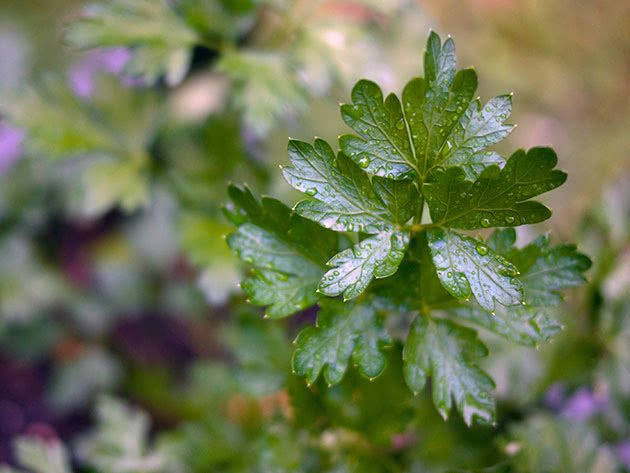

A site for culture is chosen well-lit, with light, loose, fertile and not too moist soil. Light loams and sandy loams with a pH value of 6.5-7.0 units are most suitable for parsley. It is undesirable to sow parsley in a place where the groundwater is too high. If on your site they lie close to the surface, you can make high beds for parsley.
Good crop precursors are onions, tomatoes, squash and squash, potatoes, cabbage and cucumbers.
Do not grow parsley after Umbrella (carrots, parsley, celery, fennel, coriander, dill and others), but with them - please: parsley and dill, parsley and carrots, parsley and cilantro, and so on can grow on the same bed ...
Parsley grows well in the same area with legumes, cucumbers and tomatoes.
How to plant parsley
Planting parsley in the spring requires advance preparation of the site, which is carried out in the fall. If you are sowing parsley in the fall, soil preparation for cultivation is carried out at least two to three weeks before sowing.
Growing fodder parsley requires the introduction of manure into the soil, but not before sowing parsley, but a year before it, before growing the predecessor crop. Green parsley (leaf), on the other hand, grows well on manure. It is brought in in the fall for digging in the amount of 4-5 kg per m². Instead of manure, compost can be used in the same quantities. In the poor soil, in addition to organic matter, a complex mineral fertilizer is applied, but this is done in the spring, immediately before planting. If you are going to sow parsley before winter, then apply mineral fertilizers to the soil along with manure or compost.


Since dry parsley seeds germinate slowly, soak them in water for half an hour and then dry them to crumble and not stick to your hands.Make grooves 1-1.5 cm deep in the garden bed at a distance of half a meter from one another, spill them well with warm water, and when it is absorbed, sow seeds in them, close the grooves with soil and compact it. Parsley usually springs up in two to three weeks. Podzimny sowing is carried out with dry seeds, after which the bed is mulched with peat or humus.
Reviews about the good Parsley Leaf Gigantella GOLD
26 reviews for Parsley Leaf Gigantella GOLD
write a feedback
liked the variety
I grow parsley every year, experimenting with varieties. So far, the Gigantella variety is my favorite. In general, I like the store where there is a large assortment of seeds of any kind, and there are also quite a few brands of seeds.
Like
I like the store and by the germination of seeds this year, I can judge that it makes sense to order seeds here. After all, from everything that I ordered here, most of the seeds showed good germination
not gone
Parsley did not go away for the first time, I would like to vibrate ideally for similarity. Peresіav - and lo and behold, everything went down and now miraculously growth, what is the reason, I don’t know until the tsikh feast.
Rises!
Probably I was very lucky, all kinds of parsley have sprung up: both gold and not gold. Now I wondered whether it is worth buying more expensive if the cheapest one grows well. I wish everyone good luck with the harvest!
Not dear and good! All around are in the center, ale the store is spraved to trim the price. As soon as the policy of prices does not change, I will be able to buy it. Parsley is great!
befitting
The whole variety of parsley befits them, so it is superbly green, but it’s fast to be updated in order to get it. I got off to my heart's content, I wish I could drink
convenient in a professional package
There are seeds that always take a lot, for example, parsley. Everyone sows a lot of it. Some of the seeds, of course, will not sprout, but the rest will give abundant greens, which will last until late autumn and also at the beginning of next summer.
good grade
Last year, due to the heat, the seeds of this variety emerged with a great delay and it turned out that the parsley grew by cm 2 only by October. Hope she hibernated well.
super
Summer is of course very sultry here, yes! But this does not affect the parsley in any way, the main thing is to plant it in moist soil in time. I take the seeds a second time!
one of the best varieties
This variety of parsley is one of the best, so basically I sow only its seeds. There is always a lot of greenery and grows back quickly after cutting.
Like
I like this variety because the greens grow very quickly, and there is plenty of it all summer. Seeds in a professional package, it is very convenient and also advantageous in price.
liked
Do not rush to send the seeds, because we will not plant soon, but the store did not delay and put another packet of Gold parsley seeds as a gift.
I am even satisfied with the price, so I replace the day in Pomidorchik once for the ric. I take over the parsley, even large bags.
I am even satisfied with the price, so I replace the day in Pomidorchik once for the ric. I take over the parsley, even large bags.
Happy
Leaf parsley, in my opinion, is planted in any garden, in general it is not uncommon, but it is not very often possible to grow delicious parsley. Like the Gigantella variety. I am very happy with it.
What I love about this variety of parsley is the speed with which the greens grow. All my neighbors and relatives have been with parsley the whole summer.
The seeds in the store are good, take at least this parsley, sprouted quickly and amicably. The scent is delicious and grows back quickly.
what I like about this variety of parsley is the speed of regrowth of the harvested greens. There is a lot of it and after a week everything grows back to its original size
Some people don't like parsley gigella, but in vain. Some salads only need large leaves. For example, it is very tasty in combination with beetroot and honey mustard sauce.
inexpensive
For 10 g, it's not a pity to give 4 hryvnyas, let alone at the bazaar, the prices have increased. Save online stores and reasonable prices in them.
Favorite greens
Where cucumbers and radishes are grown, there is also a place for growing greens. parsley is always a welcome guest on my table. How nice it is to know that all this is grown by our own hands and everything is so tasty.
Seeds like
I buy parsley seeds every year, and sometimes I collect my own. Leafy Gigantella Gold is a gorgeous parsley that sprouts very close-knit shoots and grows quickly. So my family is provided with greenery for the whole summer, right up to the very late autumn.
Wonderful variety
it is a pleasure to grow this variety of parsley. True, you first need to tinker, since watering the sown seeds is simply necessary for quick germination. But then it is fully rewarded. Huge brushes of parsley leaves delight any grower.
Good variety of parsley
This variety is good for winter processing. A lot of leaves, just a lot. My family freezes parsley a lot in the freezer, and then eat it in winter. Germination is good, but constant moisture is needed.
As if promised super huge leaves, but not quite what I hoped for. In this regard, the question is: or is it a problem with the seeds, or is it all about the terrible heat that came to us in June?
I'm waiting for the harvest
I bought a batch of seeds in Pomodorchik, including Gigantella parsley, and did a winter sowing last fall. Sowing such seeds is a pleasure, I hope that it will not disappoint with the yield.
Growing parsley on a windowsill
Caring for parsley at home
If you decide to grow parsley at home, then sow it, as we just described, in seedling boxes with a substrate of vermicompost and coconut fiber, laid out on top of the drainage layer. The seeds are pre-processed in this way: they are poured with water for 2-3 days and changed twice a day, and a couple of hours before sowing, the seeds are dipped for half an hour in a weak solution of potassium permanganate. The depth of planting seeds in the substrate is no more than half a centimeter, but on top it is necessary to sprinkle the crops with a layer of loose earth 1 cm thick, and then place the container with the crops in a dark place.
If you want to speed up the germination of seeds, cover the box with glass or plastic, but do not forget to ventilate the crops and remove condensation from the film.
As soon as shoots appear after two to three weeks, the seedling box is moved to the windowsill. The grown seedlings are thinned out in such a way that the distance between them is at least four centimeters. The ideal heat setting for parsley seedlings is 15-20 ºC. At a lower temperature, parsley seedlings slow down growth, and if the thermometer is too high, the seedlings dry out. The most important condition for the normal growth of seedlings is a long daylight hours.
If the days are too short, arrange additional artificial lighting for the seedlings by placing a fluorescent lamp at a distance of 60 cm from the box.
- Diseases of cucumbers and their treatment (in the greenhouse and in the open field)
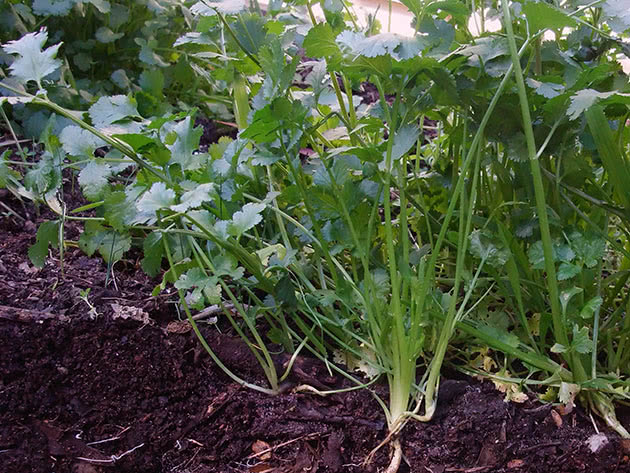

The first harvest of parsley at home will give a month and a half. A branch with a height of 10-12 cm reaches optimal maturity - it can be cut and eaten, leaving a part of the shoot with a third of the leaves in the box. Parsley on the windowsill is most often grown early-ripening - it can be cut two weeks earlier than mid-season or late varieties. Parsley at home of the following leafy varieties gives good yields: Astra, Russian Feast, Fitness, Beads, Green Pearls, Morning Freshness, Gloria and others.
Growing parsley from root vegetables
This method is convenient in that you do not have to wait for seed germination. At the end of October, before freezing, dig up the parsley with roots up to 5 cm long and up to 4 cm wide.In a box for seedlings disinfected with a strong solution of potassium permanganate, pour a layer of drainage, then a substrate for violets, into which, almost end-to-end, transplant the parsley dug out in the garden, leaving only the apical buds above the soil surface. Lightly tamp the soil and water, then take the box out to the insulated balcony or to an unheated veranda.
Water the parsley in moderation, and as soon as green sprouts appear, move the box to a bright room with a temperature of about 20 ºC. On cloudy days, young greenery may need additional lighting. When intensive growth begins, water the parsley more often and abundantly. If you do not make serious mistakes in care, a green bed will grow on your windowsill by the New Year.
Watering the parsley
Parsley care requires regular and sufficient watering of the seedlings. Do not allow the soil in the boxes to dry out or waterlogged: watering with water at room temperature is carried out daily, but the amount of water should be moderate. Avoid the formation of a crust on the surface of the substrate, destroy it by loosening.


Feeding parsley
Growing parsley from seeds involves liquid feeding of seedlings with environmentally friendly fertilizers, which are applied no more than twice a month. These can be organic fertilizers or mineral complexes from manufacturers that have proven themselves well on the market.
How to grow a plant using seedlings
When using seedlings, you need to perform the following action plan:
- Choose the right soil. It can be bought ready-made, but it is better to take to make a soil mixture from home soil and purchased in a 2: 1 ratio. With a high acidity of the soil, 1 bucket of soil mixture must be mixed with 25 grams of chalk.
- The prepared material is poured into containers for planting seeds.
- Seed material should be soaked in warm water for 2-3 days. This allows you to remove ethers, which are formed in a large amount during primary germination. The fluid changes regularly.
- The seeds of curly parsley are dried so that they become free-flowing. Or you need to pour out the liquid and put them in a small layer on a damp cloth. The fabric on which the seeds lie should be watered with a little water. When they start to stick together, they can be moved into the soil mix. You just need to make small dimples where the seeds are placed and covered with soil.
- The container is removed to the windowsill or moved to the greenhouse.
- If the summer period is not so hot, then the seedlings will not have to wait long. Seedling material needs to be ventilated every day, to monitor the state of moisture. The plant is irrigated using a drip system. Or they use a device that will spray water in small quantities.
- Rooted seedlings are irrigated with a spoon. If the plant has secondary leaves, then the seedlings dive into different small containers.
- At the beginning of the last spring month, curly parsley is transported to the ridges. The spacing between the rows should be at least 20 cm, and the gap between the potillas should be approximately 10 cm.
Growing parsley outdoors
Planting parsley in the ground
We have already told you about sowing parsley seeds in the ground, but sometimes parsley is grown through seedlings. When to sow parsley for seedlings and how parsley is grown for seedlings, we described in the "Greens" section of the article "Sowing vegetables for seedlings in March" - it is easy to find on our website. We remind you: first, by soaking the seeds for a day in water, rid them of essential oils that slow down germination, then, wrapping the seeds in a damp cloth, wait for the appearance of white sprouts, after which the seeds should be dried until flowable and sown.
Parsley seedlings dive in the phase of development of two true leaves in peat pots, and when two months have passed from the moment of sowing, the root parsley is planted in open ground together with pots at a distance of 7-15 cm - depending on the type of plant. Leaf parsley is planted with an interval of at least 20 cm between the bushes. The row spacing is left within half a meter. And do not forget to prepare the soil in advance on the site.
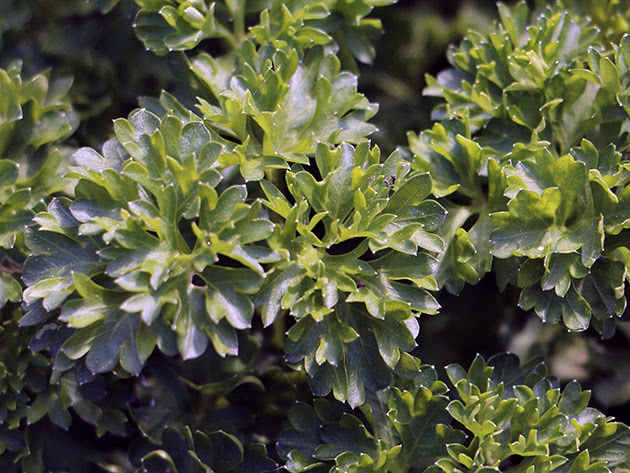

Caring for parsley in the ground
Open-field parsley care is not special. Typical routine activities: thinning seedlings, weeding the area from weeds, loosening the soil in rows and aisles, watering and fertilizing. Parsley in the spring, when its greens are still tender and weak, really needs protection from weeds, which, as a rule, are much stronger, hardier and more aggressive than any vegetable crop, so do not forget to regularly weed not only the rows of parsley, but also the aisles.
It is better to do this one day after watering or rain, while simultaneously destroying the formed crust and loosening the soil surface. Loosening promotes aeration of the parsley roots.
Watering the parsley
Parsley in the open field also needs regular moisture, like the one that grows at home, and leafy varieties in this matter are much more capricious than root ones. Drought-resistant root parsley, on average, needs two waterings per growing season, while leafy varieties require more frequent watering.
You will see that it is time to water the parsley by the state of its leaves. Watering is carried out early in the morning or after sunset. The water temperature should not be lower than the air temperature, therefore, the irrigation water must be heated in the sun and, if it is tap water, give it time to settle.
Feeding parsley
Leaf parsley, to a greater extent than root parsley, needs nitrogen fertilizers, which are applied twice a season in the form of 50-60 g of saltpeter for every 10 m². Root parsley, which prefers phosphorus and potassium to nitrogen, is fed in spring with full mineral fertilizer, and in August, 50 g of potassium salt and 70 g of superphosphate per 10 m² are added to the soil. The inclusion of a nitrogen component in the autumn feeding of root parsley can lead to the accumulation of nitrates in root crops.
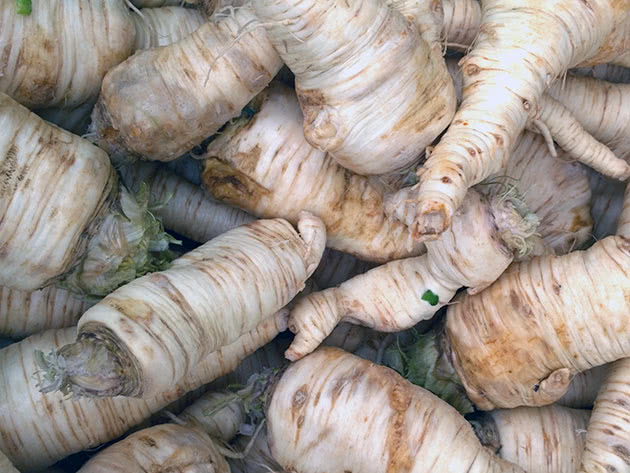

What to plant after parsley
In the area where parsley grew, umbrella crops should not be grown. The next sowing of parsley in this area, as well as sowing of other celery crops, can be carried out no earlier than in 4-5 years. Garlic, onions, tomatoes, peas, beans and potatoes grow well after parsley.
Contraindications and harm
Several years ago, curly parsley was placed on a par with drugs. This is due to the seeds of the plant, which contain a large amount of essential oil rich in apiol. It should be noted that the herb can bring any harm only after its use reaches several kilograms at a time. Overdose may occur when consuming large amounts of parsley oil. Poisoning symptoms:
- aggression;
- euphoria;
- panic;
- uncontrolled laughter;
- a deep sense of fear.
Oil production in Russia is not carried out, since this process is unprofitable and extremely expensive.
In addition to the possible harm, there are contraindications that you need to familiarize yourself with before using the spice:
- stomach ulcer;
- large kidney stones;
- allergic reaction;
- exacerbation of pancreatitis;
- nephritis;
- chronic gastritis;
- inflammation of the mucous membrane of the bladder;
- pregnancy (can cause miscarriage or premature birth).
Pests and diseases of parsley
Diseases of parsley
Like other crops, parsley can suffer from various diseases. Parsley is most often affected:
- Diseases of cucumbers and their treatment (in the greenhouse and in the open field)
Powdery mildew is a fungal disease, the symptoms of which look like a loose, almost white coating on the ground parts of the plant. With the development of the disease, black dots appear on the plaque - the fruiting bodies of the fungus. In affected plants, reproductive capacity is sharply reduced. The development of the disease is provoked by rainy weather with sudden changes in temperature.
Control measures. After harvesting, collect and remove all plant residues from the area. Treat the area with Bayleton in accordance with the instructions;
Stolbur is a disease that causes chlorosis at the edges of leaves on the lower tiers of bushes. With the development of the disease, the edges of the leaves turn red, then the redness spreads throughout the leaf. Root crops have reduced turgor, and they are poorly stored. The carriers of the disease are leafhoppers, the first symptoms are found in late July or early August.
Control measures. To minimize the risk of infection, do not allow leafhoppers to appear on the site, fight weeds, dig up the area and treat the plants with herbicides;


Alternaria, or black rot, affects plants both in the beds and during storage. In the initial stage, the disease can manifest itself in the form of a "black leg": the root collar is affected in plants, and if you do not fight the disease, then soon it can hit the trunk, after which the plant turns yellow and dies. After the ground part, the disease can also affect the root crop. The disease begins, as a rule, in places of microtrauma - in cracks, cuts or scratches.
Control measures. Observe crop rotation, remove and burn residues from the site. When the tops reach a height of 10-12 cm, treat the plants with a solution of 40 g of the Hom preparation in 10 liters of water, and in the middle of summer, scatter the Barrier preparation around the root crops at the rate of 1 tablespoon per m² of the garden;
White spot, or parsley septoria, is a fungal disease that affects the leaves, leaf petioles and stems of the plant. In the middle of summer, brown spots appear on the lower leaves of parsley, which brighten over time, only the border around them remains dark. Gradually, the disease spreads to the upper leaves. With the development of the disease, the leaves turn yellow and dry, the stalks break, which negatively affects the yield of the crop.
Control measures. At the end of the growing season, destroy plant debris and dig up the area. Warm seeds at 45-50 ºC before sowing. In the first decade of July, twice with an interval of 10 days, process the parsley on the leaves with a solution of 20 drops of Energen in a liter of water;
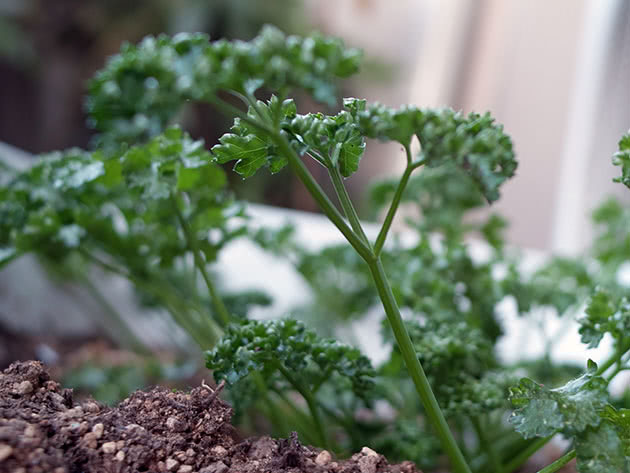

Rust affects parsley most often in early summer: reddish-brown spots appear on the underside of the leaves, gradually merging with each other. As a result, the leaves turn yellow prematurely, dry out, and lose their taste.
Control measures. Treat plants in the same way as for white spot disease;
Cercosporosis, or early burn, looks like irregular yellowish or brown spots up to 6 mm in diameter on the leaves and stems of plants. In a period of high humidity, the spots become covered with a grayish bloom. Affected plants stunted, their leaves turn yellow and dry. Warm and humid daytime weather, foggy nights and abundant morning dew contribute to the development of the disease.
Control measures. At the beginning of the development of the disease, treat the area with one percent Bordeaux liquid. If necessary, you can carry out several such treatments at intervals of 10-12 days. The last spraying is carried out no later than two weeks before the parsley harvest.
In addition to the diseases described, felt and white rot, peronosporosis (downy mildew), aster jaundice and other diseases also pose a danger to parsley.


Parsley pests
Most often, umbrella pests, including parsley, are in trouble:
The carrot flap is a small insect that feeds on parsley juice. The larvae of the leaf flies also suck the juices from the plant: they are wrapped in leaves, and the plant looks like terry. These pests are destroyed by double processing of parsley with Iskra, Iskra Bio, Fitoferm or Karbofos in May, when adults appear en masse, and in June, when larvae appear;
Stem nematode is a small worm up to 1.5 mm long, laying eggs in parsley tissue. Both the nematode and its children suck the sap from the plants, from which the affected parts fall behind in growth, bend and die. For preventive purposes, parsley seeds are heated for 15 minutes before sowing in a thermos with hot water - 45-50 ºC. The site after harvesting is deeply dug up. And, of course, compliance with crop rotation is mandatory;
The carrot fly is a green, tinted insect up to 5 mm long, preferring a humid environment. If it starts on the site with parsley, the plants will begin to lag behind in development, the leaves will acquire a red-purple hue, then turn yellow and dry. The proximity of parsley to carrot beds increases the risk of flies, since flies flock to the smell of carrot tops. To mask the aroma attractive to pests, spray the carrots with a solution of a tablespoon of ground red or black pepper and 1 teaspoon of liquid soap in 10 liters of water. Or sprinkle a mixture of one part naphthalene and 10 parts sand between rows. Since the fly hibernates in the soil, after harvesting, it is advisable to carry out a deep autumn digging of the site;
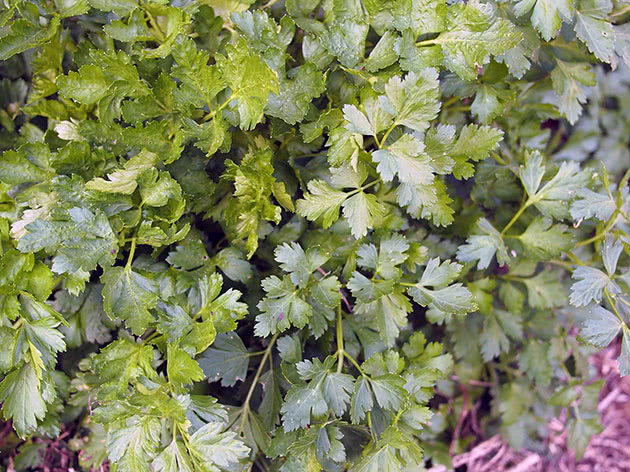

The melon aphid is an omnivorous pest that appears in the garden at the end of June and can reproduce up to 10 generations during the growing season, which, being located on the underside of leaves, flowers and shoots, suck juices from the plant. As a result, the parsley stops growing and dies. But that's not all the trouble: aphids are a carrier of viruses and bacteria, from which there is still no way to get rid of. To minimize the risk, immediately kill all weeds as soon as they appear, remove and burn the yellowed parts of the plants, dig deep after harvest. As soon as you notice aphids on the parsley, treat the area with a solution of 40 g of laundry soap or any other soap solution in 10 liters of water. If necessary, the treatment is repeated 2-3 times with an interval of 5 days.
Collection and procurement of raw materials
Curly parsley is harvested in the second year after sowing. The first year is the growing season. In the middle of summer, it is necessary to remove all the green part of the plant rosette. The same procedure should be done before the onset of the first frost. In the second year after such procedures, parsley will give a rich harvest of greens, which can be harvested in early April-May. The roots and seeds of the plant are harvested in the fall of the second year of flowering.
The cut green mass of parsley must be rinsed well under running water. You can dry it in several ways:
- in the fresh air;
- dehydrator;
- in the oven.
Store dried raw materials in a dark, dry, well-permeable container. A paper or canvas bag may work for this. Under these conditions, the herb is stored for no more than 2 years.
Types and varieties of parsley
As we already wrote, two types of parsley are grown in culture - root and leaf. Leaf parsley has two varieties - smooth and curly, which differ only in appearance. Parsley varieties are divided according to the ripening period. We offer you an acquaintance with the best varieties of parsley.
Smooth leafy parsley varieties
- Gloria - an early ripe fruitful variety for cultivation in greenhouses and in the open field with a low rosette and large leaves. Grown for fresh consumption and for preparations for the winter;
- Bogatyr - a fragrant fruitful variety that grows well after cutting. The leaves are large, triangular, dark green, on long petioles. Ripening time from 70 to 80 days;
- Hamburger - one of the new varieties of medium height with delicate aromatic leaves of bright green color. Ripening period from 75 to 90 days. Used fresh and dried;
- Carnival Is a high-yielding variety with medium-sized, aromatic, dark green leaves on long stalks that grow well after cutting. From germination to harvest, no more than 60 days pass.
The varieties Italian Giant, Green Crystal, Appetizing, Fragrant Wall, Rosava, Green Carpet and others are also in demand in culture.


Curly varieties of leaf parsley
- Mooskrause 2 - German compact variety with strongly corrugated aromatic dark green leaves. From cutting to the growth of new leaves, no more than 40 days pass. Parsley of this variety tolerates drought and low temperatures well;
- Bravo Is a variety with long, upright stems that are easy to harvest. The leaves are strongly corrugated, bright green, very fragrant;
- Aster - an early fruitful variety with corrugated leaves collected in dense rosettes. Leaves grow back quickly after cutting. The variety is grown both outdoors and indoors;
- Esmeralda - mid-season variety, the greens of which grow well after cutting. In mass, the bush reaches 50 g. In a rosette there are 25-30 curly leaves on short petioles;
- Breeze - a tall variety with a rosette height of up to 75 cm, the ripening period of which is about 80 days, and the mass of one plant reaches 60 g. The greens are tender, after cutting it retains a fresh look for a long time.
Popular varieties are also Frize, Kudryavaya, Triplex, Cinderella, Spontaneous, Claudia, Moskurland, Slava Erfurt, Kaderava, Darki.
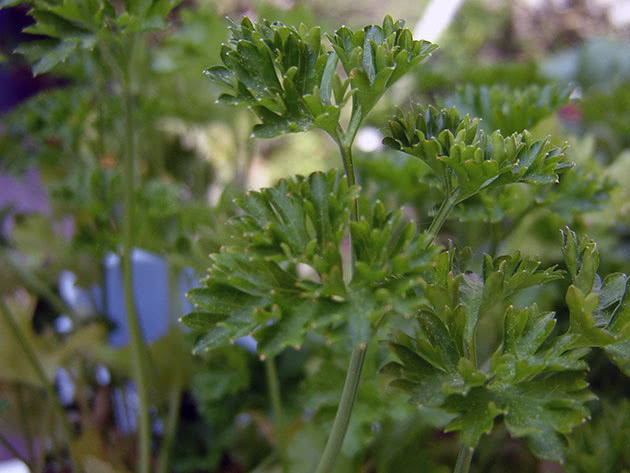

Root parsley varieties
- Sugar - an early fruitful variety with dense conical grayish-white root crops up to 30 cm long, up to 6.5 cm in diameter and weighing up to 60 g. The pulp of excellent taste is white with a yellowish center. The time interval from the emergence of seedlings to the onset of technical ripeness is 85-100 days;
- Alba - a late high-yield variety with excellent taste root crops, reaching a mass of 300 g. The advantages of the variety are also that root crops do not have side roots, and they are perfectly stored;
- Bordovician - a late-ripening variety, the shape of the root vegetable resembles a white carrot weighing up to 200 g. The pulp is also white, fragrant. When stored properly, the variety has excellent keeping quality;
- Yielding - mid-season, disease-resistant winter-hardy variety, reaching its technical ripeness from the moment of emergence in 130 days. Juicy roots reach a length of 20 cm;
- The final - mid-season fruitful variety with excellent taste root crops up to 23 cm long, weighing up to 200 g in the form of an elongated cone.
In addition to those described, such varieties of root parsley as Konica, Doctor, Eagle, Good Morning, Vershki and Roots, Berlinia and Piquant are popular.
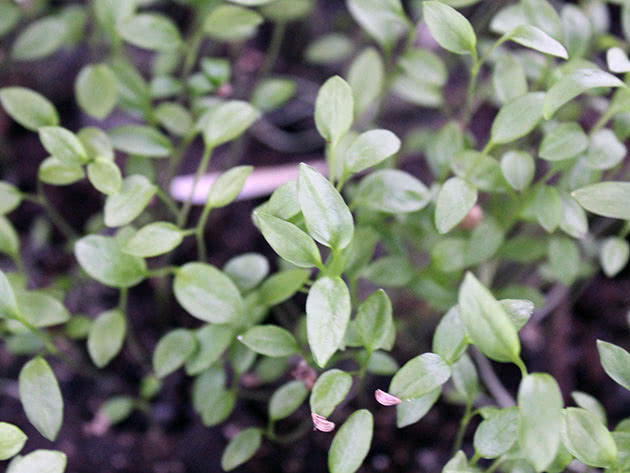

The chemical composition of the plant
| The popular garden culture has a very rich composition: | Also greens contain: |
|
|
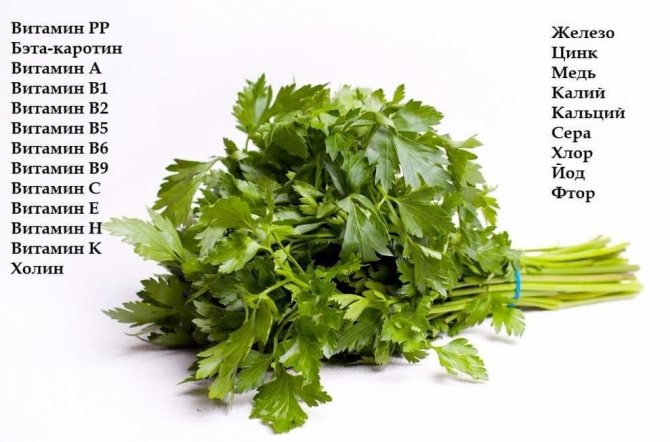

| The fruits contain: | Nutritional value of the culture: |
|
|
Properties of parsley
Useful properties of parsley
Fresh parsley not only delights our taste, but also saturates the body with essential elements and vitamins.No wonder the ancient Egyptians valued this plant worth its weight in gold. Today parsley is in the same demand as hundreds of centuries ago, both in cooking, and in medicine, and in cosmetology. What is the use of parsley? What vitamins in parsley make it indispensable for the human body? What are its healing properties?
Few people know that parsley contains as much carotene as carrots, and contains no less vitamin C than lemon. The daily norm of ascorbic acid is contained in only 50 g of parsley. In addition to vitamins A and C, parsley contains vitamins B1, B2, B12, PP, as well as folic acid, fatty acids, magnesium, phosphorus, iron, potassium and calcium. Thanks to the vitamins and elements contained in parsley, it:
- helps to improve the functioning of the thyroid gland and adrenal glands;
- improves metabolism;
- strengthens blood vessels;
- has an anti-inflammatory effect;
- strengthens the gums;
- stimulates the brain and improves oxygen metabolism;
- regulates appetite and satiety;
- has a beneficial effect on vision;
- effective in the treatment of nephritis and diseases of the genitourinary system;
- helps to overcome depression and restore strength.


For the treatment of diseases, juice, infusions and decoctions of parsley are used. Parsley juice is used to treat respiratory, heart and eye diseases. In the treatment of diseases of the optic nerve system, a good effect is given by the use of parsley juice mixed with carrot juice in a ratio of 1: 3. And the combination "parsley and garlic" is an excellent diuretic, used primarily to stabilize high blood pressure. In addition, drugs that combine the healing properties of these two cultures, stabilize cholesterol levels, have an antiviral effect, cleanse the body of toxins, reduce excessive blood clotting and protect against cardiovascular diseases.
Parsley can whiten the skin and make bright freckles and age spots less noticeable - extracts from parsley are used to make whitening creams. Parsley relieves swelling, treats insect bites and bruises, promotes scarring of ulcers and fistulas.
Extract, decoctions, infusions and oil of parsley help to get rid of female diseases - menstrual irregularities, pain during menstruation, improve the physical and mental state of menopause. As for the male body, the use of parsley preparations relieves painful sensations during inflammation of the prostate gland and has a general strengthening effect on the entire body.
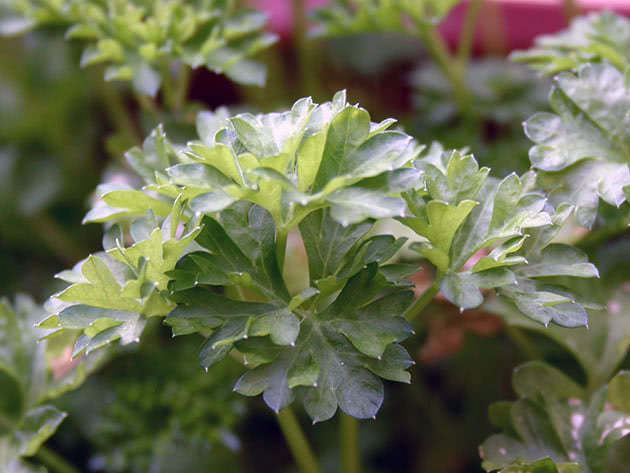

Parsley root decoction: pour two tablespoons of chopped plant roots with a glass of boiling water and boil for a minute, then cover and allow to cool. Drink 1-2 tablespoons three times a day before meals for anemia, malaria, prostatitis, intestinal disorders, increased gas production and to stimulate the immune system
Areas of use
Curly parsley greens contain a huge supply of nutrients such as vitamin C, riboflavin, retinol:
- helps with sweating, relieves puffiness and skin rashes;
- decoctions and tinctures are used as diuretics and choleretic agents;
- with the help of masks and rubbing with leaf juice, you can eliminate freckles and successfully fight pigmentation.
Carved leaves with a pronounced spicy taste are widely used as a seasoning for meat and vegetable dishes, used in the preparation of marinades and pickles. It is noteworthy that the cultivation of curly parsley is not prohibited, although the seeds of the plant are included in the list of toxic products with a pronounced narcotic effect.
Care rules
Curly parsley needs constant watering and loosening of the soil. However, be careful not to flood the beds. If, when grown in a greenhouse, the seedlings were spoiled with complex fertilizer, then after rooting and transplanting, it is time for feeding.
Fertilizing the root system of parsley
When preparing the soil for the next season in the autumn, the bed for growing curly parsley should be fertilized with humus and dug up. Apply nitrogen and phosphorus-potassium fertilizers before planting seedlings or sowing seeds. Leafy varieties do not require further feeding.
If you plan to use the root for food or for medicinal purposes, then in the fall, feed the plants again with fertilizers containing phosphorus and potassium.
What does curly parsley heal?
- Gastritis
- Atherosclerosis
- Diabetes
- Stomach ulcer
- Adenoma of the prostate
- Cholelithiasis
- Chickenpox
- Pyelonephritis
- Ailments of the genitourinary system
- Heart defects
- Scarlet fever, measles
- Neuroses
- Dermatitis
- Diseases of the gastrointestinal tract
- Arrhythmias
- Kidney ailments
- Microsporia
- Heart failure
- Prostatitis
- Cellulite
- Obesity
- Dark spots
- Lentigo
- Dark circles under the eyes

